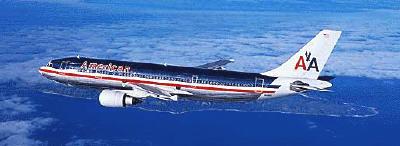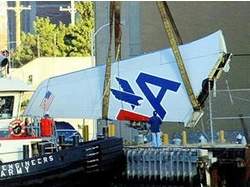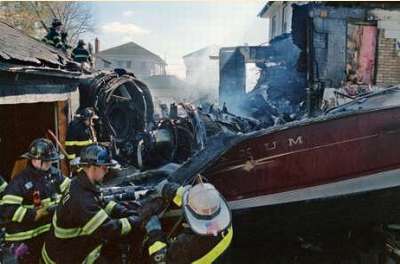Mon, May 31, 2004
Unrelated To AAL New York Crash, But Just As Deadly
It may not have been the fatal flaw in American Airlines Flight
587's 2001 crash, but it could be a big problem for future flights
of the Airbus A300-600.

According to the New York Times, the NTSB has turned up a flaw
in the rudder design of the A300. Investigators say the rudder of
the A300-600 can swing too far during rapid acceleration, causing
severe tail damage or even delamination of the aircraft. The NTSB
said the governor that limits the rudder's movements -- the
"limiter" -- didn't keep up with rapid changes in the speed of the
aircraft.
 Airbus apparently was ready for the
finding. Spokeswoman Mary Ann Greczyn said in a statement that a
complete redesign of the empennage was in order. "We expected it
was coming. It will add another level of safety for those
extraordinarily rare times when there are rapid changes in air
speed due to aircraft upset."
Airbus apparently was ready for the
finding. Spokeswoman Mary Ann Greczyn said in a statement that a
complete redesign of the empennage was in order. "We expected it
was coming. It will add another level of safety for those
extraordinarily rare times when there are rapid changes in air
speed due to aircraft upset."
At the focal point of the finding wasn't the November 12, 2001
crash of American Airlines Flight 587, but another incident
involving an American Airlines A300-600 in 1997. In that incident,
a flight crew member was injured when the aircraft, flying near
West Palm Beach (FL), dramatically increased velocity. The NTSB
said the limiter couldn't keep up with the rapid change in
airspeed. The aircraft subsequently lost about 3000 feet in
altitude as the crew struggled to regain control.
In its investigation of the 1997 incident, the NTSB said the
limiter system simply couldn't keep up with airspeed changes of
more than 2.4 knots/second. The A300-600 flying near West Palm
seven years ago was accelerating at approximately 10
knots/second.
American Airlines has been locked in a bitter battle with Airbus
over liability in the 2001 crash at Belle Harbor (NY). All 260
people on board Flight 587, as well as five people on the ground,
were killed after the copilot, apparently fighting severe wake
turbulence, swung the rudder drastically from side to side. As a
result, the NTSB says the vertical stabilizer departed the
aircraft, leading to the crash.

Now, American says it is already training its A300-600 pilots to
avoid "the specific shortcomings in the Airbus A300-600 rudder
control system that the NTSB recommendation involves."
More News
Hazardous Weather Information Summary of significant meteorological information (SIGMET/WS), convective significant meteorological information (convective SIGMET/WST), urgent pilot>[...]
Aero Linx: FAI Hang Gliding and Paragliding Commission (CIVL) The mission of the FAI Hang Gliding and Paragliding Commission (CIVL) is to administer hang gliding and paragliding on>[...]
“This partnership with Archer will accelerate Korea’s leadership in next-generation air mobility. By combining Archer’s industry-leading eVTOL technology with Kor>[...]
From 2023 (YouTube Edition): Indiana’s Rotors ‘n Ribs Helicopter Fly-In Celebrates 7th Year Held annually for the last seven-years at Indiana’s Goshen Municipal A>[...]
The Airplane’s Left Wing Struck The Windsock Pole Located Near The Runway, Which Had Been Constructed From A Telephone Pole On September 27, 2025, at 1418 eastern daylight ti>[...]
 ANN's Daily Aero-Term (10.26.25): Hazardous Weather Information
ANN's Daily Aero-Term (10.26.25): Hazardous Weather Information ANN's Daily Aero-Linx (10.26.25)
ANN's Daily Aero-Linx (10.26.25) Aero-News: Quote of the Day (10.26.25)
Aero-News: Quote of the Day (10.26.25) Classic Aero-TV: Of Rotors, Ribs, World Records, and a Growing Phenomenon
Classic Aero-TV: Of Rotors, Ribs, World Records, and a Growing Phenomenon NTSB Prelim: Toop Thomas A Glasair Super II FT
NTSB Prelim: Toop Thomas A Glasair Super II FT





